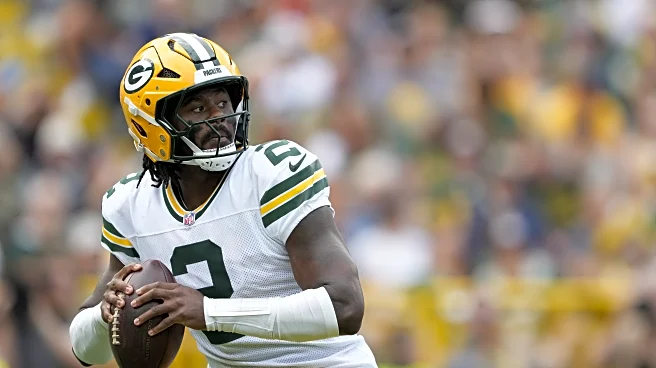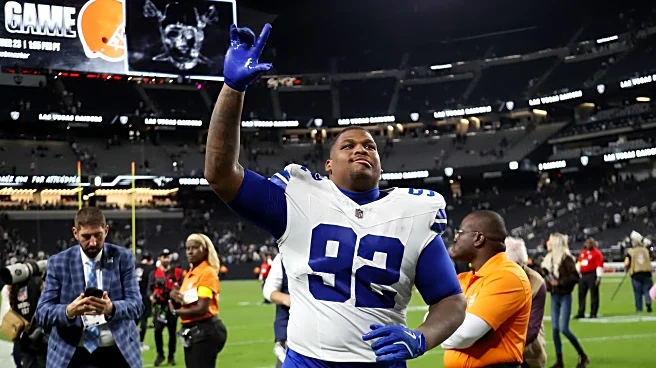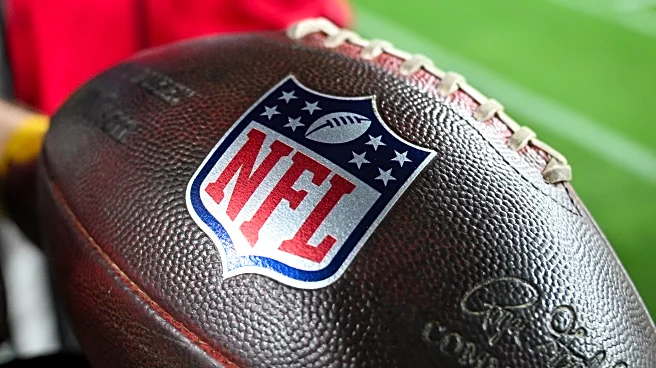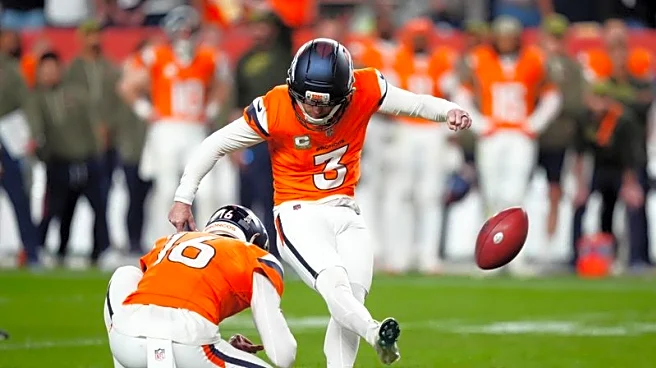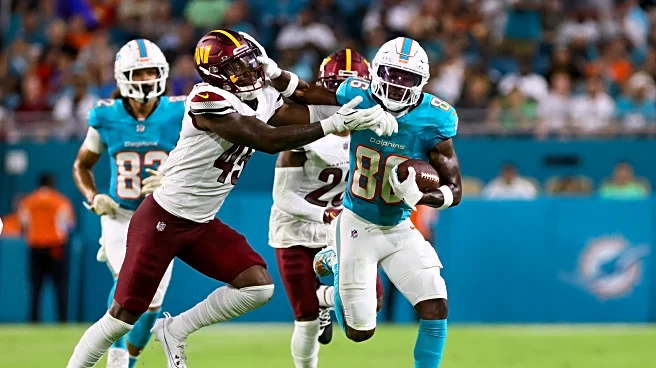The NFL salary cap has risen from $182.5 million in 2021 to $279.2 million in 2025, all while the NFL’s teams have figured out a better way to keep hold of their top talent with the use of salary conversions
and void years. Because of the lack of stars who have hit the free agent market, the biggest gains in the rising market have gone to non-Pro Bowl second-contract players, who are unsurprisingly the very type of players who are now at the top of the pecking order in free agency in the modern NFL. That is all to say: Green Bay Packers fans might be surprised by what 2026 has in store for their team’s free agents, if they haven’t paid attention recently.
Tom Silverstein wrote an article for the Milwaukee Journal Sentinel, after talking to league sources, which laid the groundwork for where these players’ markets stand at the moment. Let’s dive into the information and give some context to these numbers.
QB Malik Willis
Back in September, I wrote about how the backup quarterback market exploded. Not the “maybe we’ll start you” quarterback market like Daniel Jones’ situation with the Indianapolis Colts. True blue backups.
“Up until recently, there were very few backup quarterbacks in the NFL who received north of $5 million per year. Even veteran quarterbacks with starting experience, like Jameis Winston ($4 million) and Jimmy Garoppolo ($3 million), came short of that number.
Recently, the market has moved, though. Tyson Bagent of the Chicago Bears, who threw all of two passes last season, signed a two-year, $10 million extension a couple of weeks ago. Prior to his new contract, the only backup quarterbacks earning north of $4 million per year were Marcus Mariota ($8 million), Jacoby Brissett ($6.25 million), Zach Wilson ($6 million), Jarrett Stidham ($6 million) and Tyrod Taylor ($6 million) going into the 2025 regular season.”
Once Bagent signed for $5 million per, I wrote that the number was likely Willis’ floor price moving forward. Remember, Bagent threw all of two passes in all of 2024. He’s thrown four in 2025.
That’s just sort of how this works in the NFL. If one player gets a number, the entire market shifts up to that number. It’s the new minimum, and teams don’t really have an option but to pay the price if they want the player. They can’t justify a lower price in an era with such high cap growth. You’re either in on the player or out on the player. That’s how it’s viewed in agent circles.
Here’s what Silverstein had to say about Willis’ situation:
“Willis could make $5 million to $8 million next season as an unrestricted free agent, maybe more if he gets a chance to show he can do beyond running the option offense.
Three NFC personnel officials who have studied the Packers this season and watched their victory over the New York Giants, didn’t feel that Willis would do much better in free agency than some of the higher-paid backups such as Chicago’s Tyson Bagent, Miami’s Zach Wilson, Houston’s Davis Mills, Washington’s Marcus Mariota, Arizona’s Jacoby Brissett and the New York Jets’ Tyrod Taylor.”
Hey, it looks like I was on the right track! For what it’s worth, the Packers would net a sixth-round pick ($5 million average per year) to a fifth-round pick ($8 million average per year) if they lost Willis to a deal in that range this offseason, but only if they don’t offset the loss in free agency with an addition of their own. I don’t think Green Bay will be very active in free agency, if at all, in 2026, but we’ll get into that a little later.
WR Romeo Doubs
In May, I wrote that Doubs would likely ask for a deal in the range of $13 million per year, because that’s what Buffalo Bills receiver Khalil Shakir got in a heavily rotated receiver room. That’s sort of the market that Doubs’ team has looked at as a comparable situation, per sources. Obviously, Doubs has concussion history, which is an added layer to the mix, but it only takes one team to overlook that for him to reach his full market price.
Here’s what Silverstein reported on Doubs’ outlook:
“Probably $11 [million] to $14 million,” the director said of what Doubs will earn in free agency.
This, again, shouldn’t be surprising. The Packers would get a fifth-round pick for losing Doubs via the compensatory pick formula at that price, again, only if they do not touch free agents who would offset the loss in the 2026 offseason.
LT Rasheed Walker
In the same article as the Doubs projection, I said that I thought that Walker would push $20.5 million per year because that’s what Dan Moore Jr., a tackle who led the NFL in sacks allowed, received in 2025 free agency. Silverstein’s sources stopped short of hitting that number, but not by much.
“Tackles get overpaid because there aren’t any, so Walker will likely get paid too much,” the director said. “[The Los Angeles Rams’] Alaric Jackson got $19.25 [million], [Houston’s] Tytus Howard, $18.67 [million]. I mean it’s wild. [Dallas’] Terence Steele got $16.5 [million] and he’s about to lose his job.”
Around $20 million per year would give the Packers a fourth-round pick in 2027 based on the compensatory pick formula.
C/RG Sean Rhyan
I never made a prediction for Rhyan’s situation. Rhyan didn’t have a clear comparison because he was used rotationally, something no other NFL team really does regularly, other than Matt LaFleur’s Green Bay Packers. I know Jon Runyan Jr. got $10 million per year in the 2024 offseason, but that’s about as close as I would have gotten for a comparable situation to Rhyan.
Silverstein’s source wasn’t super confident about projecting the market, even now:
A lot will depend on how he finishes the season at center. “As a backup/low-end starter, he should be in the $5 [million]-$7 [million] range. If he stinks down the stretch, his price will be less. If he’s viewed more as a backup type, maybe closer to $3 [million] per year.”
If that is indeed the number, and it’s not pushing closer to $10 million per, then maybe the Packers should try to sign Rhyan long-term. With a weak center class coming in the draft, it wouldn’t be the worst plan of action. That being said, I doubt that Rhyan’s team wants to sign a deal until after the season. They should be looking to maximize this opportunity of playing time for the remainder of the season due to Elgton Jenkins’ injury.
LB Quay Walker
Back in July, when the Packers turned down Quay Walker’s fifth-year option (just short of $15 million) but general manager Brian Gutekunst stated that he still wanted to keep Walker around long-term, I questioned if he knew what the off-ball linebacker market actually looked like. I only feel stronger about that today, after the team named him their team captain.
When Jamien Sherwood signed for $15 million per, after sitting on the bench for the first three seasons of his career, it was clear that $15 million per was going to be the cost of even an average-ish starting linebacker coming off a rookie contract moving forward. Nick Bolton also got that same number, even after an up-and-down start to his career. That is simply the price now.
Here’s what Silverstein’s sources had to say about Walker’s situation:
“Given his emergence as a key piece in the Packers’ defense and the fact he’s only 25 years old, he’s likely to fetch between $12 million to $15 million a year. The Packers balked at paying $14.7 million to execute his fifth-year option, so negotiations may go to the wire before free agency.”
They should have just picked up the option this offseason. If Walker leaves, a loss of a $15 million average per year player should get the Packers a fifth-round compensatory draft pick.
DE Kingsley Enagbare
One player that Silverstein didn’t talk about here is defensive end Kingsley Enagbare, who will probably sign for north of $2.6 million per, based on the buzz he drew from teams at the trade deadline. Just last week, Enagbare actually played as many snaps as Rashan Gary, a good sign for Enagbare and a bad sign for Gary. $2.6 million is an important number because it was what linebacker Eric Wilson signed for. Currently, the Packers are expected to receive the third-to-last pick in the 2026 draft because of Wilson’s leaving in free agency.
The 2027 NFL Draft
So if Green Bay loses all of these players, here’s what their 2027 draft picks could look like, if the market estimates were correct:
- 2nd round (original)
- 3rd round (original)
- 4th round (original)
- 4th round (Rasheed Walker comp pick)
- 5th round (original)
- 5th round (Quay Walker comp pick)
- 5th round (Romeo Doubs comp pick)
- 5th/6th round (Malik Willis comp pick)
- 6th round (original)
6th round (Sean Rhyan comp pick)7th round (Kingsley Enagbare comp pick)
Remember, the Packers already lost their 2027 first-round pick in the trade for defensive end Micah Parsons and their 2027 seventh-round pick in the trade for backup tackle Darian Kinnard this season. The NFL states that teams may only receive up to four compensatory picks (the highest options) each year, so Green Bay would not be rewarded for losing Sean Rhyan or Kingsley Enagbare if the other four unrestricted free agents also walk and hit their projected market numbers.
What I see happening in 2026
First of all, I think Quay Walker is going to get extended. Over the last half-seasons (second half of 2025 and first half of 2026), he’s played much better football. He was also named the team captain of the defense, alongside only defensive end Rashan Gary and safety Xavier McKinney (linebacker Isaiah McDuffie is the special teams captain).
Once that deal is done, a comp pick for Sean Rhyan is potentially back in play. If the team re-signs Rhyan, then a Kingsley Enagbare compensatory pick is potentially back in play. Once free agency starts, I believe the Packers will try hard to protect these compensatory picks, attempting not to offset them.
So if Rhyan isn’t brought back, they’ll be able to sign one player in the range of around $2.5 million, so that it doesn’t offset the Rhyan loss, only the fifth compensatory pick for Enagbare that the team wouldn’t be awarded anyway. If Rhyan is brought back, the team won’t even sign a player of that caliber in free agency, because it would then offset the fourth compensatory pick that the team would get for Enagbare.
Do not be surprised when the Packers sit on their hands in the 2026 free agency cycle. This was always sort of the prediction. 2026 is a year to get the house in order for a second push in 2027, before things really start to cost a lot for Green Bay moving forward.
Remember, even the release of Elgton Jenkins, which on paper saves the Packers $20 million in cap space in 2026, gets Green Bay to a functional cap space of around $0 following a Quay Walker extension, because of the cost of the rookie class. Websites like Spotrac and OverTheCap aren’t accounting for those extra salaries right now, or even those roster spots being filled. Those 2026 pages you find online also don’t count the cost of practice squad players, who do count against the cap, or the fact that the team will need money to put players on the injured reserve (at full pay) and replace them on the 53-man roster (at full pay), too. That’s how you get to $0 in effective cap space in 2026 very quickly.
An extension of tight end Tucker Kraft and defensive tackle Devonte Wyatt, which I also expect the team to do this offseason, will take some salary conversions (if not also void years) in 2026 alone. So the team will already be in “steal money from the future to keep the team together now” beginning with the 2026 offseason. That’s why I highly doubt that, on top of that, the Packers will also try to create cap space to hit unrestricted free agency in 2026, only to lose compensatory draft picks for those actions in 2027.
The window is 2025. 2026 will be conservative, but if the team can land the plane with this offseason, there will be another window for aggression in 2027. They should have nine draft picks, the ability to create cap space (if they don’t take on too much cap debt in 2026) and should have the willingness to hit free agency with fewer comp pick candidates that offseason (assuming they can get extensions done in 2026). After that, it’s 2022-2024 decay to rebuild mode for the team again. That’s the schedule. In Russ Ball we trust.
